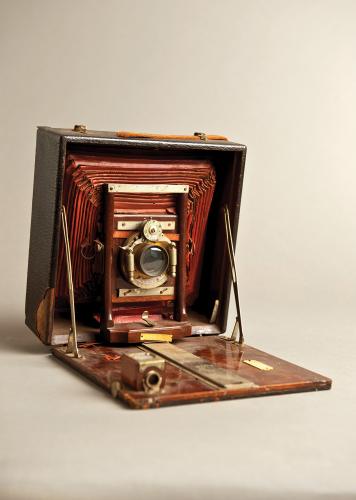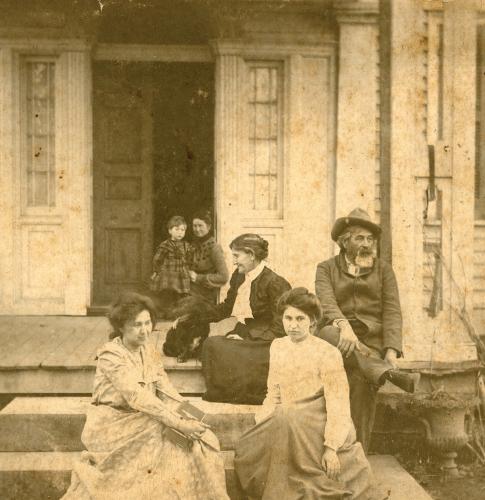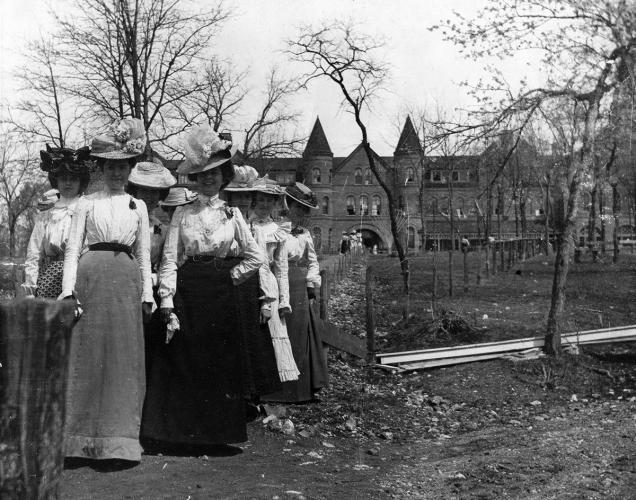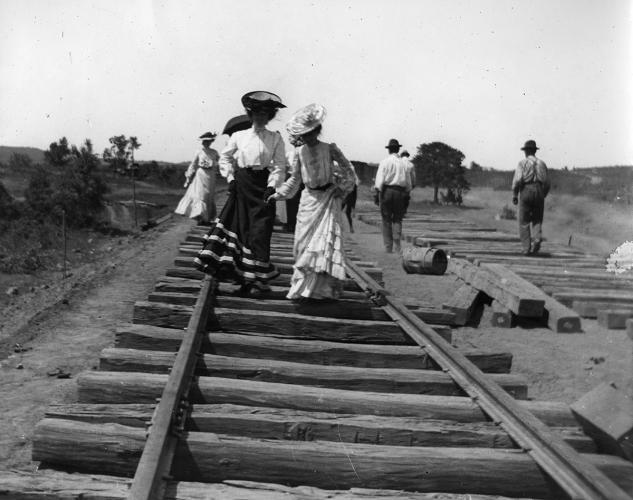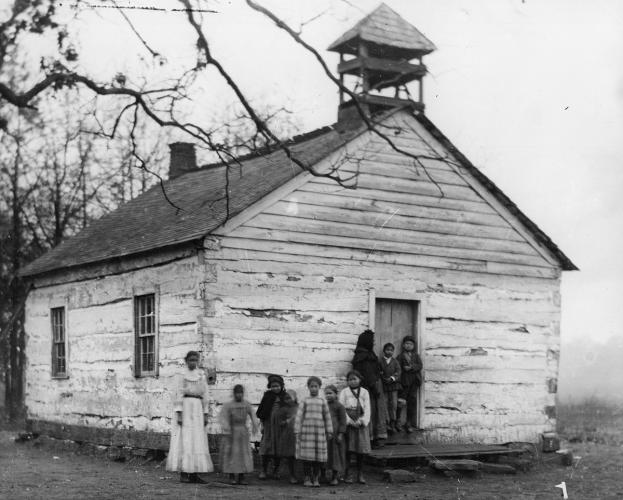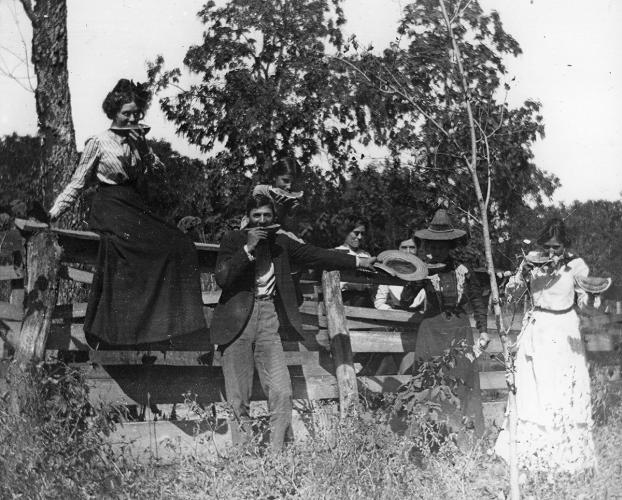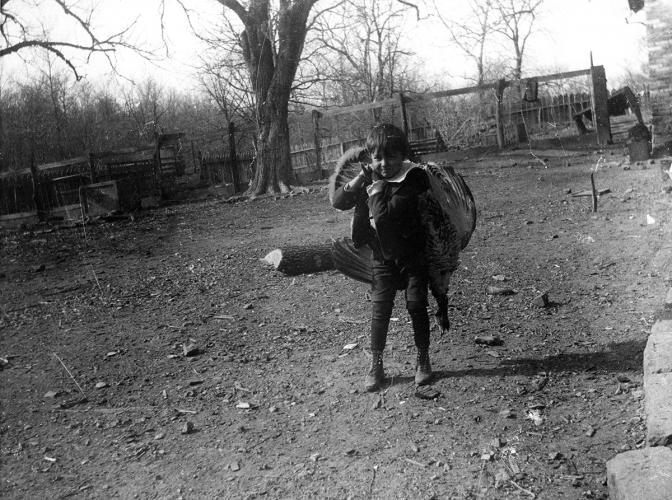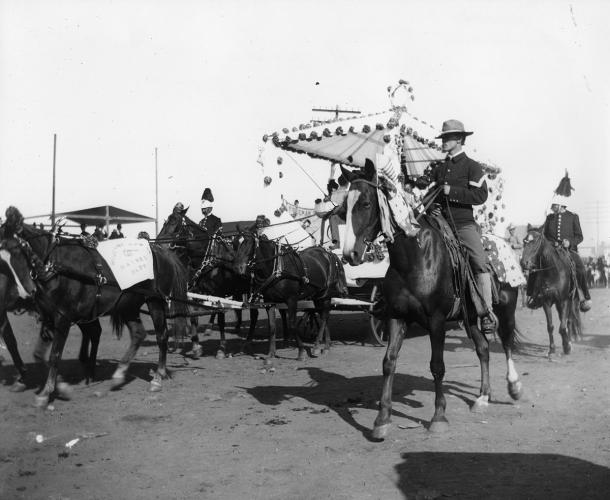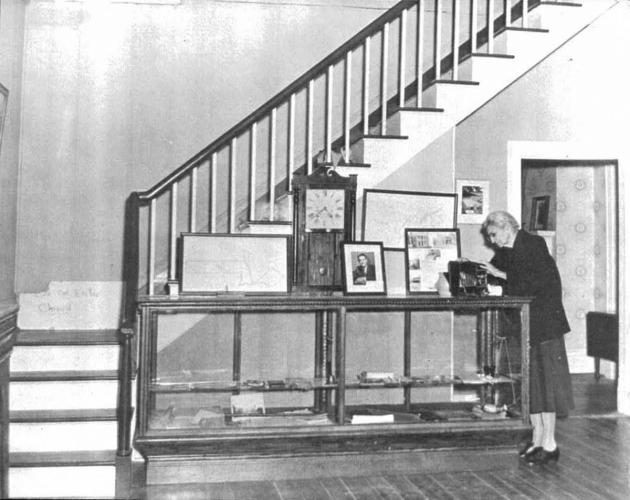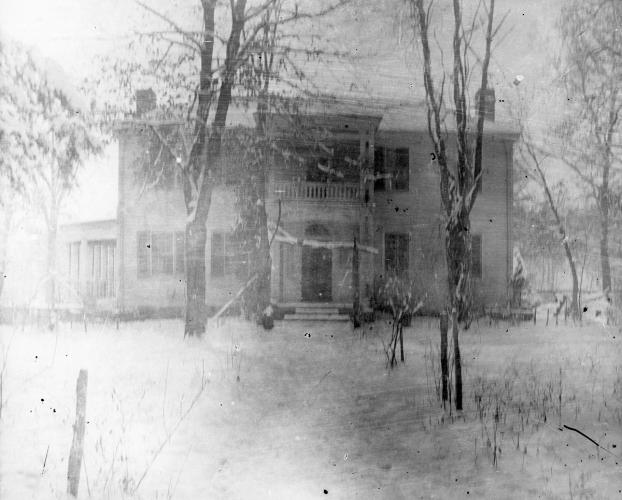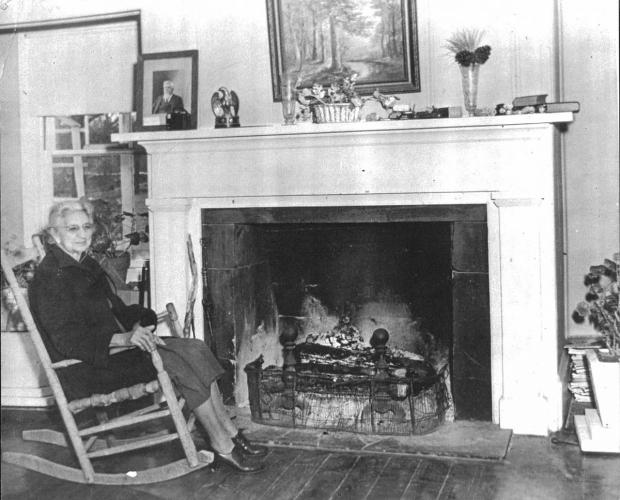In many ways, photographer Jennie Ross Cobb was much like some of her early subjects. She was a young woman from a respected family and a student at Cherokee National Female Seminary, one of the initial institutions of higher learning for women west of the Mississippi River. Also like her subjects, she was Cherokee. Yet she holds one key distinction. As the first known female American Indian photographer, she captured images of the Cherokee Nation’s people during a time of change, when they were still establishing in the area that would become Oklahoma and their tribal autonomy was especially vulnerable.
By the time Jennie Ross was born on December 26, 1881, the Park Hill community in Cherokee Nation’s Tahlequah District had already seen its heyday as home to some of Cherokee Nation’s most notable leaders and privileged families. A group of Cherokees known as the “Old Settlers” had arrived in what is now eastern Oklahoma during the late 1820s. These members of the Cherokee Nation had left their ancestral lands in the southeastern United States to escape growing encroachment of white colonizers on Cherokee lands. They negotiated with the U.S. government and initially settled in Arkansas Territory before renegotiating for land in what would later become known as Indian Territory. Cherokee Nation West, as it was called, established its own government and capital, now known as Tahlequah.
The Cherokee peoples remaining in the East elected Cherokee Nation Principal Chief John Ross for the first time in 1828. In the decade following, factions among Cherokees emerged over how best to preserve tribal sovereignty under extraordinary pressure to leave. In 1835, a group of prominent tribal community members signed the Treaty of New Echota, ceding the last remaining Cherokee land east of the Mississippi River in exchange for land out West. Principal Chief Ross and most Cherokee people protested the treaty as fraudulently signed, yet it was ratified in the U.S. Senate by one vote. The forced removal of the Cherokee people in 1838–1839 was part of a decades-long Indian Removal campaign signed into law in 1830, which effectively forced tribes east of the Mississippi to give up their traditional homelands.
John Ross was still principal chief when he arrived in Indian Territory with the last detachment of Cherokees to depart the East. He made his home in Park Hill where other affluent Cherokee peoples settled and began rebuilding their lives. More accurately, these Cherokee families—often bicultural and mixed race—depended on the labor of enslaved Africans to rebuild homes and businesses in the years after their removal from their lands in the East.
Park Hill was considered the cultural center of a new Cherokee Nation, with schools, churches, shops and stately houses anchoring new plantations. Among them, Hunter’s Home was built in 1845 by George Murrell, a white businessman who married into the Ross family. Unlike many Park Hill properties, Hunter’s Home survived the Civil War and today is the only preantebellum mansion that still stands in Oklahoma. After the Murrells left, a series of Ross family relatives managed the house. John Ross’s grandson, Robert Bruce Ross, took up the task sometime in the 1890s. He and his wife, Fannie, brought their youngest children, including Jennie, to live at Hunter’s Home. There, Jennie received her first camera.
Little detail is available about Jennie’s life in general. While we likely will never know if she asked for a camera, it’s been told that her father gave her one as a gift when she was about 15 years old. This coincides with innovations in photographic processes making cameras smaller, lighter and more accessible to amateurs. As seen in magazine ads of the day, photography was marketed as an exciting new hobby for young women. It was also considered a suitable activity that wouldn’t interfere with the expected demands of women’s domestic life. Even photo processing could be done in the confines of the home.
Jennie Ross turned a living room closet inside Hunter’s Home into a darkroom where she processed glass plate negatives. These “worked very well except during hot weather,” she is said to have told a Tulsa World reporter who interviewed her many years later. Even using one of her preferred brands—Eastman Kodak Photographic Dry Plates or Hammer Dry Plate Co.’s Photographic Dry Plates—summer’s heat worked against her. Film emulsion wouldn’t adhere to the glass if the solution was too warm, as was the case with several photos she said she took (according to the same Tulsa World reporter) of a young Cherokee cowboy named Will Rogers, who would soon grace the silver screen.
Future international entertainers aside, Jennie Ross’s photographic eye turned homeward. Among the few images credited to her is a collection of Hunter’s Home photographs made from glass plate negatives in the Oklahoma Historical Society archives. By the time her family took up residence, the house was already a half-century old, evident in its worn furnishings and soot-stained walls. Outside photos show damaged porch rails, chipping paint, buckling siding and unkempt landscapes. She framed her shots to take in details such as certificates on walls, a building’s reflection in a pond, even a tiny kitten under the dining table. More notably in this same photo, she captures two women treading the back staircase. Several of her photos around the home include family and friends in informal settings and poses that are closer to what is seen on social media platforms than what we might expect to see in early photography. Jennie Ross began her studies at the Cherokee National Female Seminary in nearby Tahlequah during the mid-1890s. With her camera, she captured seminary friends strolling Tahlequah’s wooden sidewalks, stepping along newly laid railroad tracks and enjoying watermelon slices with friends. After graduating the seminary in 1900, she worked as a teacher at several Cherokee Nation public schools. She photographed her students in front of their schoolhouse in Christie, west of Tahlequah.
Her subjects, however, extended beyond her family, home, peers and students. Her known work includes photos of the Cherokee National Supreme Court Building façade, a temperance society meeting on the town square and a town parade. In the Cherokee Nation capital, Jennie Ross’s “amateur” work appears to have reached a higher calling and quality, perhaps the effect of experience and a keener eye for perspective. This, however, assumes an order to the images that cannot be determined as they are not dated.
In 1905, at age 23, Jennie wed Jesse Cobb. The U.S. government hired Jesse to survey tribal lands in Indian Territory to break them into allotments. Unlike Cherokee tradition, in which tribal lands are held communally, allotments often divided families and communities. It was a measured blow against Cherokee Nation self-governance. If Jennie Ross Cobb was conflicted over marrying a man employed by the U.S. government—which was striving to end tribal sovereignty—that record is lost to time. The local newspaper, the Tahlequah Daily Arrow, reported the details of her wedding, stating that “the bride is one of the most popular and best known [sic] young ladies of the city. . . . She is one of those young women of sterling qualities, of whose graces, charms and talents Tahlequah is justly proud.”
The Cobbs eventually left the new Cherokee Nation that had been established in Oklahoma and settled in Arlington, Texas. There, they raised their daughter, and Jennie Cobb operated her own floral shop. Whether she continued to pursue her passion of photography is unknown.
After the State of Oklahoma purchased Hunter’s Home in 1948 to preserve the site, Jennie Cobb campaigned to become its caretaker and curator. She was appointed to the post and discovered one of her old cameras in the attic with some of her glass plate negatives. Those negatives were used in the state’s restoration of the historic site and are now part of the Oklahoma Historic Society’s collection. She remained curator of Hunter’s Home until her death at age 77 in 1959.
Jennie Cobb’s photos were invaluable in accurately restoring Hunter’s Home said Susan Teska, Hunter’s Home site director. “As a curator, I tend to look at the backgrounds of the photos. I tend to notice what the wallpaper looks like and what sorts of things are on the mantels or what the furniture on the porch looks like,” she said. Cobb “started the process of returning the house back to the time of George and Minerva. Today, we are just continuing what she began.”
Cobb’s legacy, however, goes further than the walls of that historic home. Her images tell a story of a segment of Cherokee people largely assimilated in dress, custom, language and religion to European-American ways. Yet, their Cherokee heritage was part of a fundamental identity uniting all Cherokee people, traditional and progressive, even as their government was soon to be dismantled to make way for Oklahoma statehood.
“While only taking up the hobby for a few years, Cobb’s images are unique and document the Cherokee Nation at a critical point when establishing itself in the Oklahoma Territory,” said Michelle Delaney, a photo historian and assistant director of history and research for the National Museum of the American Indian. “These images establish a significant legacy for her in the history of the Cherokee Nation and in the history of American photography.”
Just as the Cherokee Nation and its people survived U.S. attempts to dissolve its government and recovered to become the strong sovereign body it is today, Jennie Cobb’s work withstands the ages. As a photographic record of life, they defy simplified attempts to define the Cherokee experience. As a collection of Cobb’s memories, her photos reveal a dimension of humanity connecting Cherokee people today to their shared past.


